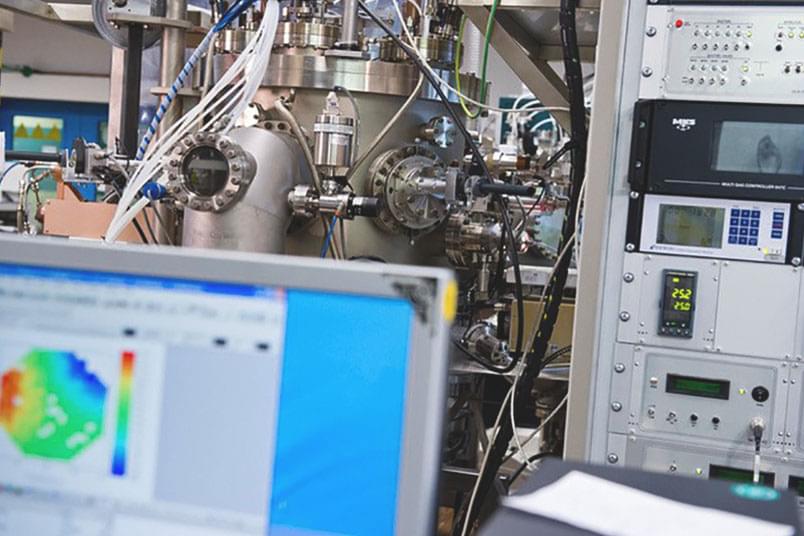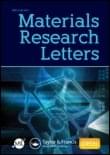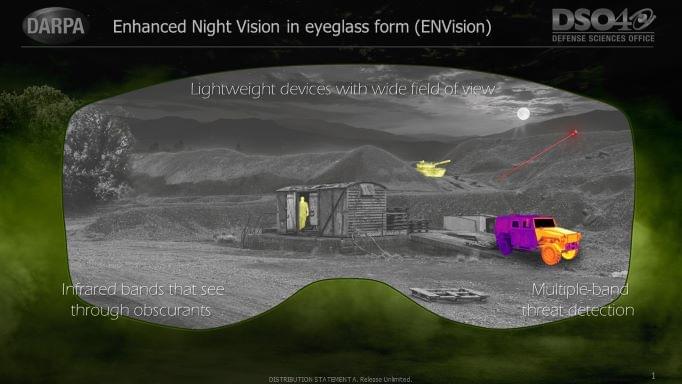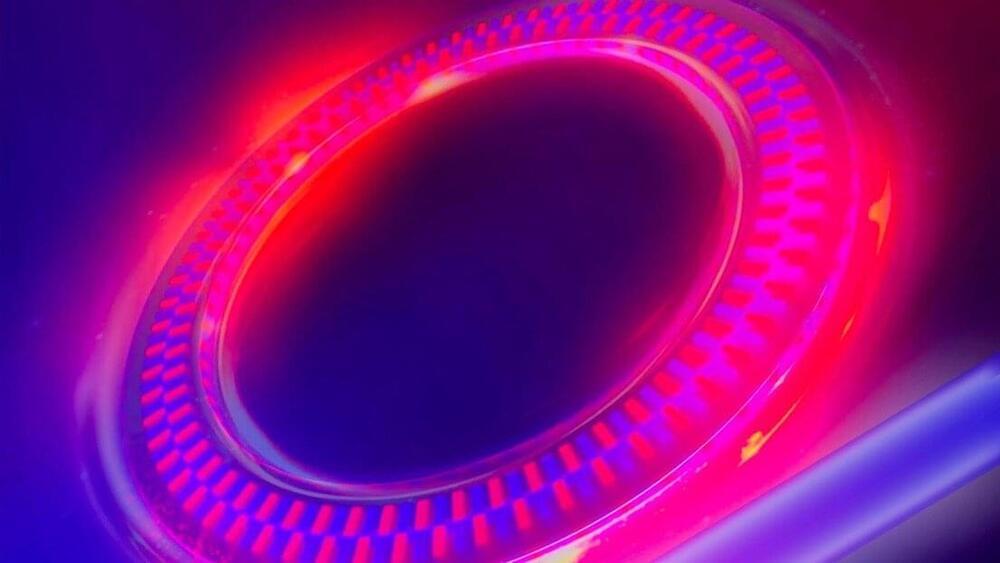
Category: materials – Page 237


A treasure map for the realm of electrocatalysts
Efficient electrocatalysts, which are needed for the production of green hydrogen, for example, are hidden in materials composed of five or more elements. A team from Ruhr-Universität Bochum (RUB) and the University of Copenhagen has developed an efficient method for identifying promising candidates in the myriad of possible materials. To this end, the researchers combined experiments and simulation.
They published their report in the journal Advanced Energy Materials (“Unravelling Composition–Activity–Stability Trends in High Entropy Alloy Electrocatalysts by Using a Data-Guided Combinatorial Synthesis Strategy and Computational Modeling”).
A view of the sputtering machine used to produce the material library counters. (Image: Christian Nielinger)

Physicists Discovered a Hybrid Particle. Bound By a Uniquely Strong ‘Glue’?
A team of physicists from the Massachusetts Institute of Technology (MIT) has discovered a hybrid particle that could pave the way for smaller and faster electronic devices in the future.
The hybrid particle, which was found to be a mashup of an electron and a phonon (a quasiparticle formed by vibrating atoms in a material), was detected in a strange, two-dimensional magnetic substance.
Probably the most intriguing aspect of the discovery, however, is that when the scientists measured the force between the electron and phonon, they saw that the glue, or bond, was 10 times stronger than what had previously been estimated for other known electron-phonon hybrids, according to the study which has been published in the journal Nature Communications.
Bio-inspired ceramic–metal composite stands its ground against cutting tools
Circa 2020
Harnessing the destructive potential of force and rotation, cutting tools like saws, drills, and angle grinders can obliterate the superlative properties that materials work so hard to perfect. And even when materials are designed to work against the power of these tools, the materials still often fail.
So what if instead we designed materials to work with the power of cutting tools rather than against them? While that may sound counterintuitive, it is just what an international group of researchers has done—and their preliminary tests show the ceramic–metal composite material they designed resists damage beyond shallow surface cuts.
The researchers, from Durham University, University of Surrey, and University of Stirling in the U.K. and Fraunhofer Institute and Leibniz University Hannover in Germany, developed a ceramic–metal composite that, despite being just 15% as dense as steel, is nearly uncuttable. By harnessing the power of vibration, the material directs tools’ destructive energy back upon themselves, wearing the tools down before they can inflict serious damage on the material.


Scientists find ‘strange metal’ that behaves in ways they don’t understand
Scientists have found a new “strange metal” that behaves in ways they can’t quite understand.
But the discovery could be key to finding out an explanation for a phenomenon that has troubles researchers for decades.
Most materials, such as copper and silver, behave in predictable and well understood ways, and scientists understand how their electrical conductance changes when they are heated or cooled.

DARPA’s Defense Sciences Office has selected 10 industry and university teams for the Enhanced Night Vision in Eyeglass Form (ENVision) program
Current night vision (NV) devices are bulky and heavy, resulting in a significant torque on the wearer’s neck. This torque greatly limits the wearer’s agility and often leads to chronic injury over prolonged use. Additionally, existing NV devices only provide a narrow field of view (FOV) and are limited to the near-infrared (IR) spectral bands, greatly limiting situational awareness in varied night conditions. ENVision seeks to leverage recent advances in planar optics and transduction materials to develop NV systems that don’t require bulky image intensifiers, provide wider FOV, offer enhanced visual access across IR bands, and are lightweight to reduce neck strain.
Five teams were chosen to develop multi-band, wide FOV planar optics and planar image intensifiers that impose near-zero neck torque on the wearer. Another five teams were selected to explore new methods to amplify photonic up-conversion processes from any IR band to visible light to enable future “intensifier-free” night vision systems.
For listing of the teams selected visit: https://www.darpa.mil/news-events/2022-01-12a

The Mandeans are historically highly suspicious of Moses (Jesus, and Jehovah come to that)
Kamose, the last king of the Theban Seventeenth Dynasty, refers to Apepi as a “Chieftain of Retjenu” in a stela that implies a Levantine background for this Hyksos king. A ‘normative inversion’ (cite Maimonides, John Spencer, Freud et al) turns the anti-Kemetic Hyksos monotheistic Set of Avaris into the equally sociopathic plague-maker of Exodus and Genesis. Two sides of the same monotheistic coin? Monotheism takes roots from the banning (and/or eradication) of all rival cults. https://core.ac.uk/reader/45268640
Egyptian accounts support Manetho and his implication that Moses is King Apophis or final Hyksos king Khamudi, “Josephus associated the Hyksos with the Exodus of the Israelites from Egypt. Many modern scholars believe the Hyksos may have partially inspired the Biblical account.” Geraty, L. T. (2015). “Exodus Dates and Theories”. In Thomas E. Levy; Thomas Schneider; William H.C. Propp (eds.). Israel’s Exodus in Transdisciplina ry Perspective: Text, Archaeology, Culture, and Geoscience. Springer. pp. 55–64. ISBN 978−3−319−04768−3.
“This is a great struggle between the truth and the delusion. This whole material world is in reality a prison for our souls, and its creator who is ignorantly revered as the supreme God by the Jews and Christians (and later also Muslims), is in fact a fallen angel, Ptahil, who listened to the whispering of the King of Darkness.”
What came before the Big Bang? The mind-bending theories explained
Where did the material come from that created the Big Bang, and what happened in the first instance to create that material?

An optical chip improved by light
Technology is increasingly moving towards miniaturization and energy efficiency. This also applies to electronic chips. Light, and optics more broadly, are functional in making compact and portable chips. Researchers from the Photonic Systems Laboratory, headed by Professor Camille Brès, have successfully applied a novel principle for introducing second-order optical nonlinearity into silicon nitride chips. A first reported in the journal Nature Photonics.
Different colors of light
“When using a green laser pointer for example, the laser itself is not green because these are particularly difficult to manufacture. So we change the frequency of an existing laser. It emits at a frequency which is half that of green, then we double it by using nonlinearity in a crystal which gives us green. Our study consists of integrating this functionality but on chips that can be manufactured with standard techniques developed for electronics (CMOS). Thanks to this, we will be able to efficiently generate different colors of light on a chip,” explains Camille Brès. The demonstrated approach had never been implemented before. Current photonic chips compatible with CMOS processes use standard photonic materials, such as silicon, which do not possess second-order nonlinearity and therefore are not inherently capable of transforming light in this way. “This turns out to be a barrier to the advancement of technology,” adds the professor.